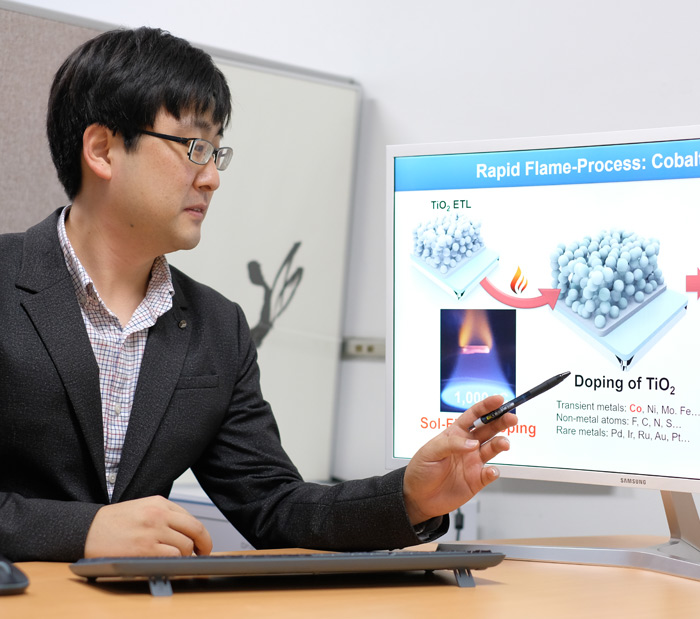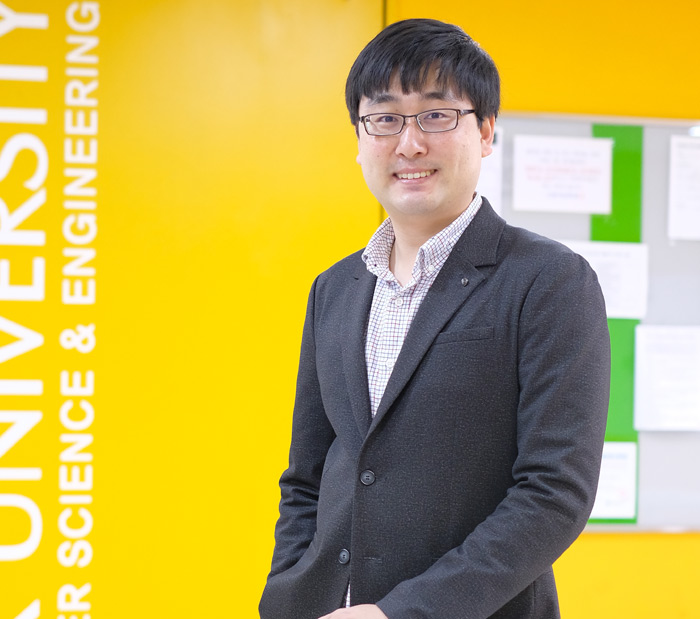Research Stories
Development of Doping Technology by Baking Metal Oxide Thin Film for a Short Time
The research is expected to open ways to commercialize high performance perovskite solar cells by developing a structure control technology of the electronic structure throughout baking process of the metal oxide thin film for a short time.
Chemical Engineering
Prof.
KIM, JUNG KYU
Prof. Jung Kyu KIM (School of Chemical Engineering) reported his research achievement on developing of a novel rapid sol-flame process to modify the energy state and electronic structure of nanoparticulated metal oxide films and their application for the charge transport/selective layer of perovskite solar cell with high efficiency.
To further increase the open-circuit voltage (V oc) of perovskite solar cells (PSCs), many efforts have been devoted to doping the TiO2 electron transport/selective layers by using metal dopants with higher electronegativity than Ti. However, those dopants can introduce undesired charge traps that hinder charge transport through TiO2, so the improvement in the V oc is often accompanied by an undesired photocurrent density-voltage (J-V) hysteresis problem. Herein, it is demonstrated that the use of a rapid flame doping process (40 s) to introduce cobalt dopant into TiO2 not only solves the J-V hysteresis problem but also increases the V oc and power conversion efficiency of both mesoscopic and planar PSCs.
The reasons for the simultaneous improvements are two folds. First, the flame-doped Co-TiO2 film forms Co-Ov (cobalt dopant-oxygen vacancy) pairs and hence reduces the number density of Ti3+ trap states. Second, Co doping upshifts the band structure of TiO2, facilitating efficient charge extraction.
As a result, the flame doping of Co increases the efficiency from 18.5% to 20.0% while reducing the hysteresis from 7.0% to 0.1%.
This research is expected to develop a wide variety of applications that use metal oxide such as information electronic devices, memories, and displays as well as energy conversion materials such as solar cells.The results of the research were published in the world's leading journal 'Advanced Energy Materials' on October 15th, 2018.*Research Title: Resolving Hysteresis in Perovskite Solar Cells with Rapid Flame-Processed Cobalt-Doped TiO2


